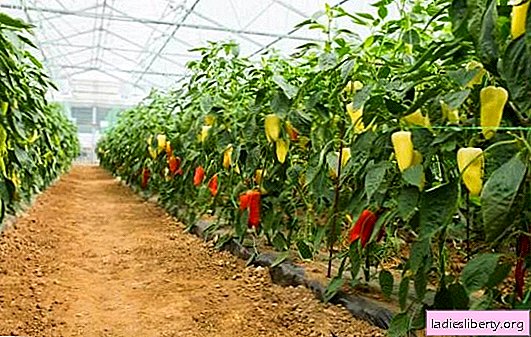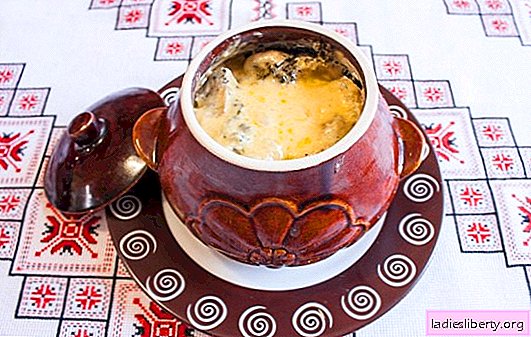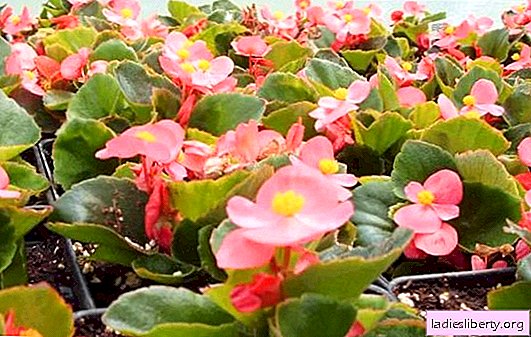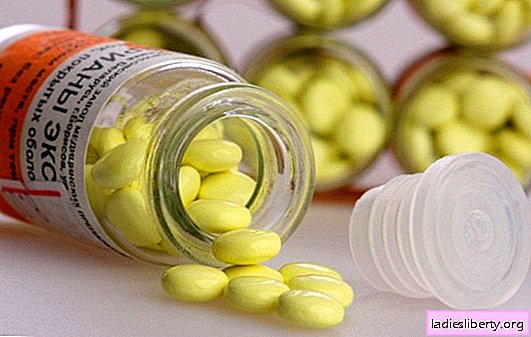
Pepper has an unrivaled and incomparable taste. By using this product, our body receives many vitamins and useful substances that contribute to the proper absorption of food by our body, as well as subsequently improves well-being.
But only if in summer you can buy pepper very cheaply, then in autumn you will have to pay a good sum for it. But you can find a way out of any problem. And in this case, the cultivation of pepper in a greenhouse. This culture is not difficult to provide a suitable temperature, and we, in turn, get a good harvest with excellent taste.
To avoid material costs, experienced summer residents mastered the technology of growing pepper in a greenhouse. This process is not difficult, but like other plants, pepper when grown in greenhouse conditions requires careful attention. To master it, it is enough to grow pepper once, then everything will work out by itself.
Choose a variety of pepper for growing in a greenhouse
There are varieties of peppers suitable for cultivation in the open field, there are those that will give an ideal crop only when grown in greenhouse conditions. We will talk about the most famous and productive of the latter.
• Cardinal. An early pepper hybrid suitable only for growing in a greenhouse. Tall plant reaching 1 meter. The fruits are purple, large, juicy.
• Claudio. Belongs to early ripening varieties, for ripening, starting from the day of germination, 115-120 days are enough. The height of the bush can reach 130 cm. The fruits are elongated dark red, large.
• Atlant. The variety will give early fruits, because they ripen from the day of germination in 105-115 days. The height of the bush does not reach more than 80 centimeters. The ripened fruits of red color are large, thick-walled, have excellent taste, juicy flesh.
• Cockatoo. An early ripe variety of pepper, reaches in 100-110 days. Suitable only for large-sized greenhouses, since its height can reach up to 1.5 meters, spreading. The shape of the fetus is elongated cylindrical red. A distinctive feature is the size of the fetus, it can reach 500 grams.
• Hercules Refers to mid-ripening varieties with large fruits, the mass can reach 500 grams. They differ from others in that they are excellently preserved, so the variety is often grown if they plan to sell pepper. Resistant to disease.
• Latinos. Early ripe, tall with large fruits (up to 200 grams), with a square meter per season, you can get up to 14 kg of fruits.
Preparing pepper seeds for sowing
Due to the fact that seeds can germinate long enough (up to a month), they are sown early: in late February - early March.
Important! Seeds of pepper well sprout only fresh, seeds of the previous year of collection have a significantly lower percentage of germination.
Preparatory work:
• seeds must be disinfected. To do this, use a 1% solution of potassium permanganate or ordinary potassium permanganate. Soak for 20 minutes, washed with clean water;
• it is advisable to soak in a solution of ash (wood) or a stimulant for a day, rinse;
• place seeds on a saucer, cover with gauze to preserve moisture. Before biting, it is necessary to ensure that the gauze does not dry out;
• hatching seeds are sown in pots to a depth of 10 mm. The soil in them must be moist;
• Cover the containers with glass or polyethylene, put in a warm place a dark place until emergence.
Important! The most optimal temperature for germination is +250 C, the minimum is +200 C.
Growing pepper seedlings for planting in a greenhouse
As soon as shoots appear in the containers, the pots must be moved to the light, the polyethylene should be gradually removed.
Water the plants regularly and in a timely manner, and 12 days after the emergence of seedlings, fertilize the pepper with a liquid complex fertilizer.
When the first two leaves appear, young plants must be pecked individually into containers.
You can plant seedlings in a greenhouse if:
• her age at the same time not less than 60 days;
• kidneys are visible in the leaf sinuses;
• growth reaches 25 centimeters;
• plants of green saturated color;
• 16-17 full sheets will be formed
• a plump stalk has formed.
Only such pepper for growing in a greenhouse will please with quick survival, good growth.
We plant pepper in the greenhouse
No matter how carefully we try to handle the seedlings when planting, for her it is a lot of stress. The future crop directly depends on how the planting is made.
The temperature in the greenhouse also plays an important role, it should be at least +150 C. Therefore, if the greenhouse is not heated, you can plant the pepper only by mid-May.
Advice! If the greenhouse is cold, film, this is more suitable for growing peppers of early ripening medium-sized varieties, in heated ones you can safely plant tall, more productive varieties.
Now it's time to decide how we will place the pepper in the greenhouse. The distance between them should be a meter, in the aisles - at least half a meter. Density is from 15 to 40 cm, it all depends on the variety, how tall and spreading the plant is.
Advice! The best time for planting is evening. Before the procedure, seedlings must be well watered.
For planting, it is necessary to prepare the wells, each pour water in the amount of 2 liters per well. When planting, it is not necessary to deeply deepen the stem, since in this case it will be harder for it to grow a strong root system, as a result, its development and growth will slow down. The lower leaves are at ground level - this is ideal.
After placing the seedlings in the pits, the soil should be compacted by hand and mulched with peat or humus.
Greenhouse Pepper Care
So that when growing pepper in a greenhouse, the plants are strong, give a good result, the first thing they need to be provided is moisture. If there is a lack of moisture, light brown spots form on the fruits, which are converted to gray rot. It should be watered with warm, settled water under the root of pepper.

An important factor is air humidity. To enhance it, you can water the paths or glass of the greenhouse.
Modern hybrids of peppers also require frequent top dressing. Therefore, at each watering, it is better to add mullein infusion or herbal tea to the water. Fresh manure is disastrously tolerated by our vegetables. During the growing season, fertilize vegetables with mineral fertilizers should be three to four times.
Air must enter the root system, but loosening the earth around is undesirable, since the root system is superficial. Therefore, it is better to mulch the soil around with sawdust, grass, humus with a ball of 3 centimeters.
Disease
Unfortunately, no matter how we try while growing pepper in a greenhouse to completely protect it from disease, this will not succeed. Most often you have to fight aphids. In addition, due to excessive watering, the leaves may crumble.
No, even a polycarbonate greenhouse is able to protect the plant from pests, so growing pepper in a greenhouse, you can not do without biological preparations that can prevent rot, bacteriosis and others.











